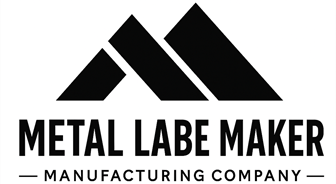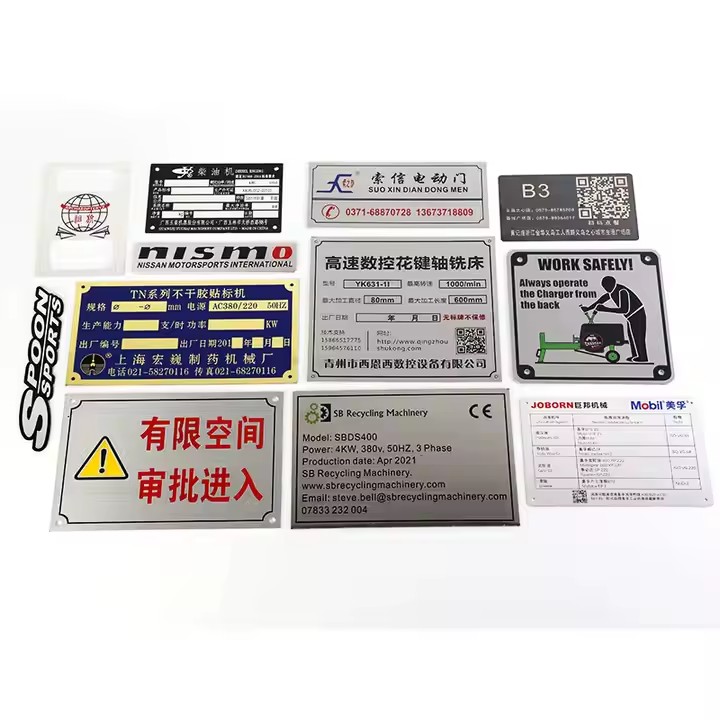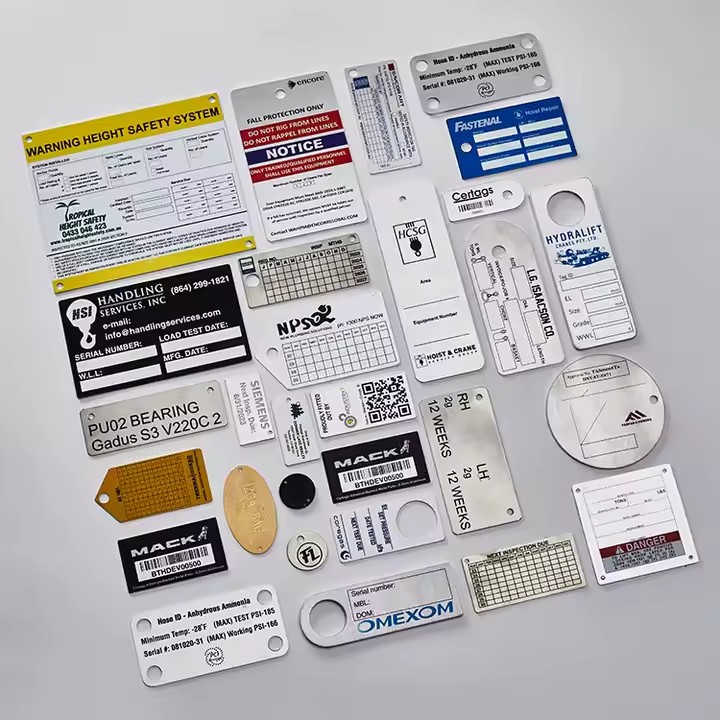A Step-by-Step Guide to Custom Metal Label Manufacturing
Custom metal labels are essential for a wide range of industries—from industrial equipment and machinery to luxury branding and product packaging. But how exactly are these labels made? What goes on behind the scenes?
In this guide, we’ll walk you through the step-by-step process of custom metal label manufacturing, so you can better understand how raw metal is transformed into durable, high-quality, and customized identification tags.
Step 1: Design & Engineering
Overview:
Every successful metal label project begins with a clear and precise design.
What Happens:
-
Clients submit vector artwork or design files (e.g., AI, DXF, PDF)
-
Engineers review for feasibility, spacing, text size, and engraving tolerance
-
Material, thickness, mounting method, and finish options are confirmed
Key Considerations:
-
Will the label be engraved, printed, or embossed?
-
What information is required (logos, serial numbers, QR codes, etc.)?
-
Is it for indoor, outdoor, or harsh environments?
✅ Tip: The better the design input, the better the final product.
Step 2: Material Selection
Overview:
Choosing the right material impacts both performance and appearance.
Common Materials:
-
Aluminum – lightweight, corrosion-resistant, cost-effective
-
Stainless Steel – strong, rust-proof, industrial-grade
-
Brass – elegant, decorative, vintage appeal
-
Copper – high conductivity, artistic look
Factors to Consider:
-
Environmental exposure (humidity, chemicals, UV)
-
Required durability
-
Visual or branding preferences
Step 3: Cutting & Shaping
Overview:
Once the material is selected, the metal is cut to the required shape and size.
Cutting Methods:
-
Laser Cutting – precise and clean edges for complex shapes
-
Die Cutting – cost-effective for high-volume runs with consistent shapes
-
CNC Routing – ideal for thicker or more rigid metals
Additional Options:
-
Pre-cut holes for rivets or screws
-
Adhesive backing for easy application
Step 4: Surface Treatment
Overview:
Before printing or engraving, the surface is often treated for better adhesion, durability, and appearance.
Common Surface Finishes:
-
Brushed – matte texture for a refined, industrial look
-
Polished – mirror-like finish for high-end appearance
-
Anodized (for aluminum) – adds color and enhances corrosion resistance
-
Bead-blasting or Sandblasting – for texture and matte finish
Step 5: Printing, Engraving, or Etching
Overview:
This step applies the actual content—logos, numbers, instructions, or designs—onto the metal surface.
Popular Methods:
-
Etching (Chemical or Laser) – permanent, high-precision marks
-
Stamping / Embossing – raised or recessed characters
-
Screen Printing – applies vibrant colors (best for indoor use)
-
UV Printing – high-resolution digital prints
-
Mechanical Engraving – deep cuts, ideal for serial or asset tags
Each process offers a different balance of durability, cost, and visual impact.
Step 6: Color Filling & Coating (Optional)
Overview:
Some labels require color enhancement for visibility or branding.
Techniques Include:
-
Paint Filling – adds contrast to etched or engraved areas
-
Powder Coating – provides full-surface color with high durability
-
Clear Protective Coating – protects against scratches and fading
This step is especially common for industrial safety labels or decorative nameplates.
Step 7: Finishing & Quality Control
Overview:
Final inspection ensures your labels meet specifications before delivery.
Processes Include:
-
Deburring and polishing edges
-
Checking alignment, clarity, and durability
-
Verifying size, thickness, and mounting options
-
Packaging and labeling for shipping
Quality assurance is vital to ensure that every label is consistent, durable, and ready for application.
Step 8: Mounting Options
Depending on your application, labels can be shipped with:
-
Adhesive backing (3M or equivalent)
-
Pre-drilled holes for screws, rivets, or bolts
-
Magnetic backing for removable solutions
-
Studs or clips for permanent mounting
Conclusion
From concept to completion, custom metal label manufacturing is a detailed process involving design precision, material science, surface treatments, and professional finishing. Understanding each step can help you make informed decisions and ensure your labels serve their purpose—whether that’s durability in tough environments or enhancing your brand’s visual appeal.
💬 Need help starting your custom metal label project? Contact us today for a quote, design support, or material consultation.







